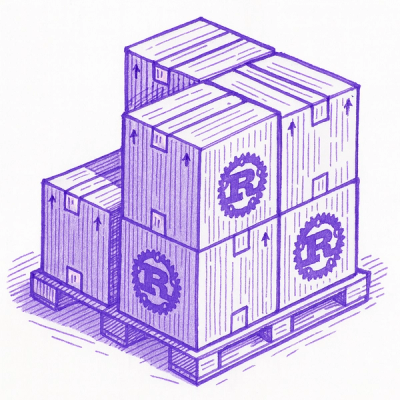
Security News
Open Source Maintainers Feeling the Weight of the EU’s Cyber Resilience Act
The EU Cyber Resilience Act is prompting compliance requests that open source maintainers may not be obligated or equipped to handle.
image-shader
Advanced tools
Tool to simplify writing shaders for HTML Image and Canvas elements.
Written in Typescript and ships with all types.
This class class creates a webgl context and texture from a given HTMLImageElement or HTMLCanvasElement as
well as a fragment shader.
The shader is wrapped with the necessery definitions and functions to render the image.
import { ImageShader } from "image-shader";
const source = new Image();
source.src = "some/url.png";
// Shader to only render the red channel of the image.
const shader = `
void main() {
vec4 pixel = getPixel();
gl_FragColor = vec4( pixel.r, 0, 0, 1 );
}
`;
const image = new ImageShader( source, shader );
document.body.appendChild( image.domElement );
new ImageShader( source, shader ) where source is either a HTMLImageElement or a HTMLCanvasElement and the
shader is a string in form of webgl shader. This means it has to include a void main() method in which or
subsequently from which the gl_FragColor is set.
For a list of available variables and methods within the shader see below.
domElement: Returns a HTMLCanvasElement in the size of the source image containing the shaded image.width: Returns the width of the content.height: Returns the height of the content.uniforms: Returns a readonly object which contains all uniforms. Setting additional uniforms is enabled by
adding more values on this object:const image = new ImageShader( source, fragment );
image.uniforms.time = 2340;
image.uniforms.anchor = [ 23, 45 ];
image.render();
dispose(): Releases all memory. Since it uses WebGL internally, simply losing the reference will not
clear all memory.render(): Re-renders the image. Should only be used after uniforms have been changed. Calling the
method otherwise is safe, but potentially wasteful.The passed in shader, used as a fragment shader for the image, ships with some uniforms and helper methods:
sampler2D image: The image/canvas in question as texture.vec2 resolution: The size of the image.vec2 uv: The UV coordinates of the current fragment.vec4 getPixel(): Returns the pixel for the current fragment. For instance:
gl_FragColor = getPixel() simply renders the image unaltered.vec4 getPixel( vec2 uv ): Returns the image pixel at the given UV coordineats.vec4 getPixelXY( vec2 coords ): Returns the image pixel at the given coordinates in pixels.FAQs
Run WebGL shaders on an image or canvas.
The npm package image-shader receives a total of 6 weekly downloads. As such, image-shader popularity was classified as not popular.
We found that image-shader demonstrated a not healthy version release cadence and project activity because the last version was released a year ago. It has 1 open source maintainer collaborating on the project.
Did you know?

Socket for GitHub automatically highlights issues in each pull request and monitors the health of all your open source dependencies. Discover the contents of your packages and block harmful activity before you install or update your dependencies.

Security News
The EU Cyber Resilience Act is prompting compliance requests that open source maintainers may not be obligated or equipped to handle.

Security News
Crates.io adds Trusted Publishing support, enabling secure GitHub Actions-based crate releases without long-lived API tokens.

Research
/Security News
Undocumented protestware found in 28 npm packages disrupts UI for Russian-language users visiting Russian and Belarusian domains.